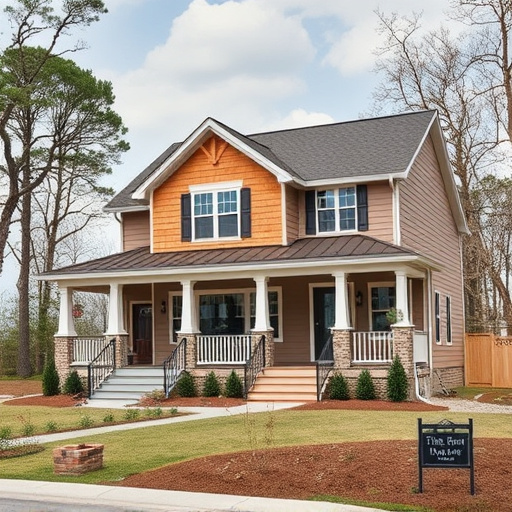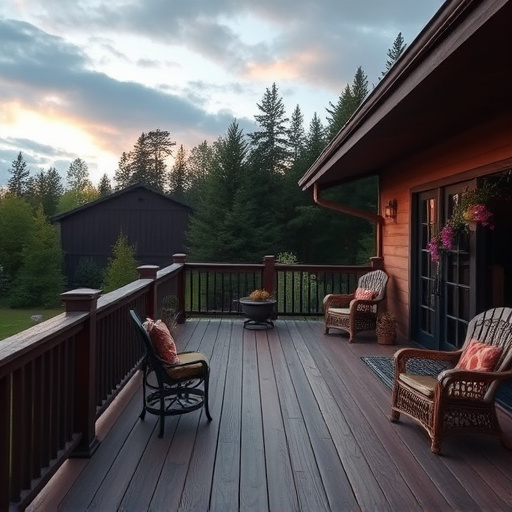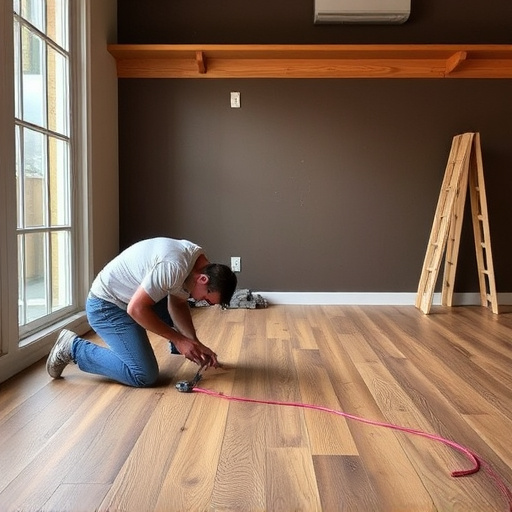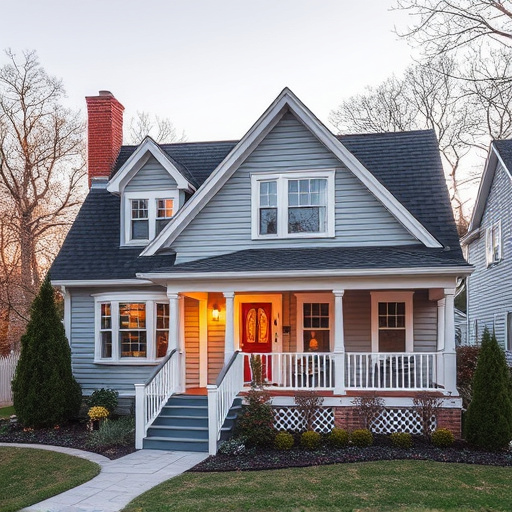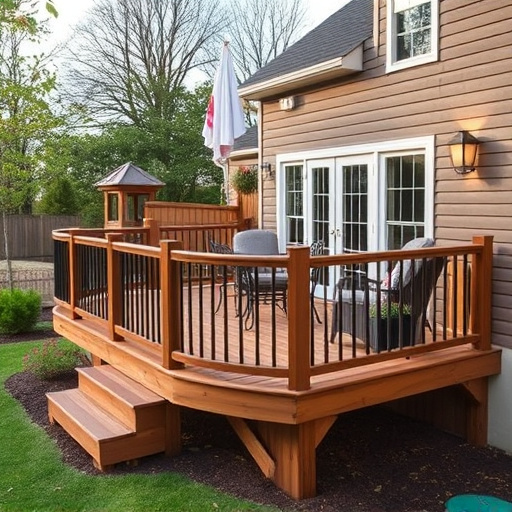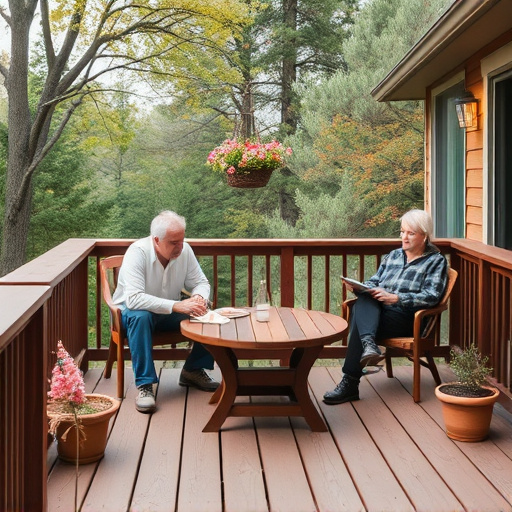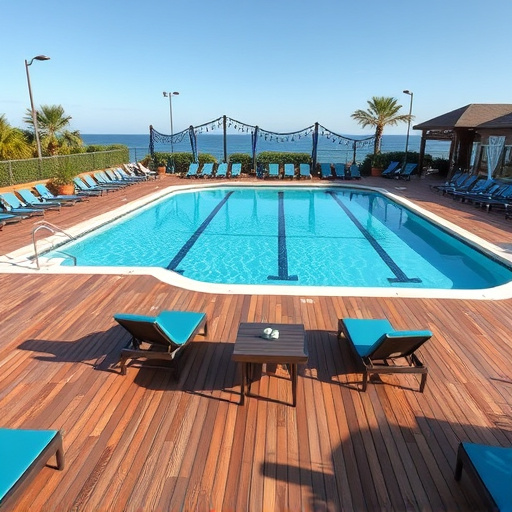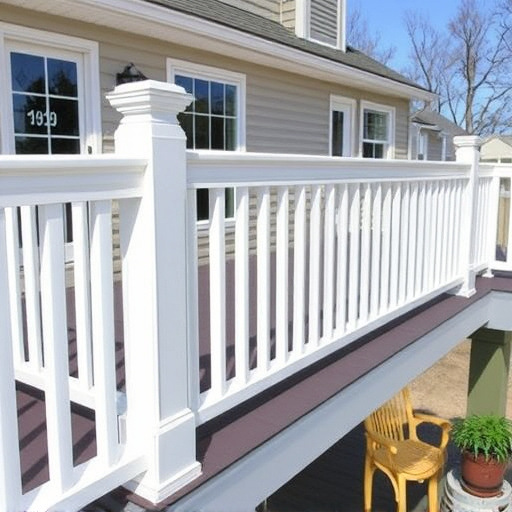DIYers designing deck stairs balance structural integrity and aesthetics, considering local building codes for safety features like handrails and treads. Choose rot-resistant woods or composite decking for durability and low maintenance. Meticulously plan and execute installation, ensuring proper measurements and support for a functional, appealing addition with seamless residential roofing and siding integration.
Creating a set of stunning and functional deck stairs is within reach for DIY enthusiasts. This comprehensive guide breaks down the process, from design considerations to construction techniques, ensuring your outdoor space boasts a safe and aesthetically pleasing addition. Learn about material choices that promise durability, explore creative design ideas, and follow a step-by-step approach for efficient assembly. Elevate your deck with these expert tips on building deck stairs.
- Understanding Deck Stairs Design Considerations
- Material Choices for Durable Deck Stairs
- Step-by-Step Guide to Efficient Stairs Construction
Understanding Deck Stairs Design Considerations
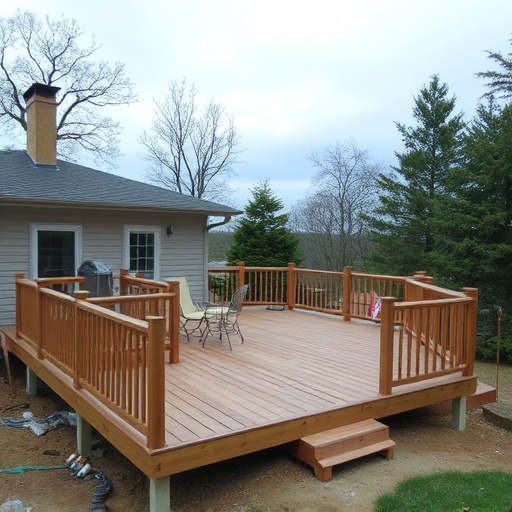
When designing or constructing deck stairs, several key factors come into play for DIY enthusiasts. Understanding the structural requirements and aesthetic preferences is essential for creating safe and visually appealing outdoor living spaces. The first consideration is the overall layout of your deck and how the stairs will fit into this design. Stairs should complement the surrounding landscape and seamlessly integrate with your home’s exterior, whether it’s a traditional wooden look or modern contemporary style.
Another critical aspect is the safety of the stairs, especially if they lead from your house to the deck. Proper handrails and treads are essential for preventing accidents, and local building codes often have specific guidelines to follow. Additionally, residential roofing and siding replacement might come into play if you’re constructing new stairs or renovating an existing deck, ensuring that these home exterior services align with your overall design vision.
Material Choices for Durable Deck Stairs
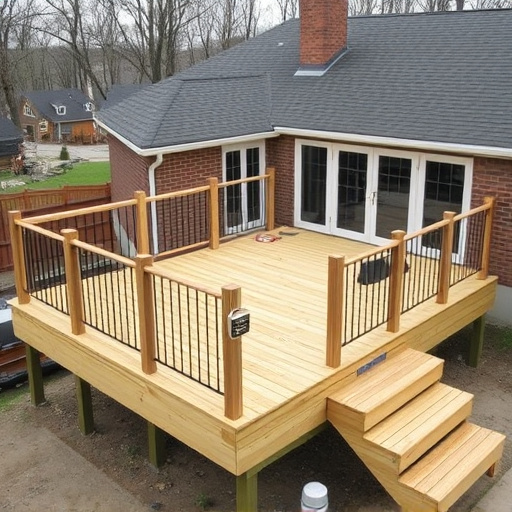
When constructing deck stairs, material choices are crucial for durability and longevity. Opting for high-quality materials ensures your stairs withstand the test of time and harsh weather conditions. For the framework, consider using rot-resistant woods like cedar or pressure-treated wood, which offer excellent resistance against decay and insect damage. These options are popular among DIY enthusiasts due to their availability and relatively low cost.
For the stair surface, selecting durable and slip-resistant materials is essential for safety. Composite decking is a versatile choice, offering the look of real wood without the maintenance. It’s resistant to fading, cracking, and splitting, making it ideal for outdoor use. Alternatively, brick or stone steps provide a classic, long-lasting option, but they can be more labor-intensive to install. Remember, the right materials for your deck stairs ensure both safety and aesthetics, enhancing the overall value of your residential siding or professional siding installations and replacements.
Step-by-Step Guide to Efficient Stairs Construction
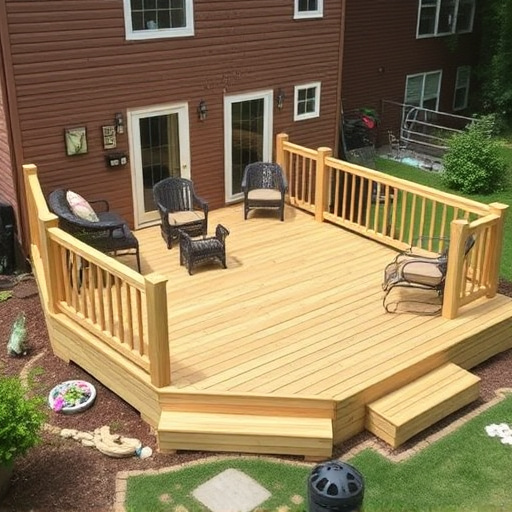
Constructing deck stairs is a project that can elevate your outdoor living space, but it requires careful planning and execution. Start by measuring the height and run (the distance along your deck) to determine the number of risers needed. A common rule of thumb is to keep each riser no more than 7.5-8 inches high for safe navigation. Next, plan the stair layout, ensuring a comfortable width—typically 36-42 inches—to allow for easy passage.
Follow these steps for efficient construction:
1. Purchase or cut stringers (horizontal supports) and risers (vertical components) to your measured specifications.
2. Install the stringers securely into the deck frame, using appropriate fasteners and ensuring they are level.
3. Attach joists between the stringers for added support, spacing them as required for your local building codes.
4. Fit treads (the step surface) over the risers and secure them with nails or screws, ensuring a sturdy connection.
5. Complete the look by adding railings—both guardrails for safety and handrailings for comfort—following local codes. Don’t forget to consider residential siding installation or updating your siding and gutters for a sleek finish.
Building custom deck stairs can enhance your outdoor living space, allowing easy access and adding architectural interest. By understanding design considerations, making informed material choices, and following a structured construction guide, DIY enthusiasts can successfully create durable and safe deck stairs for their homes. These tips empower you to transform your deck into a functional and stylish oasis.
